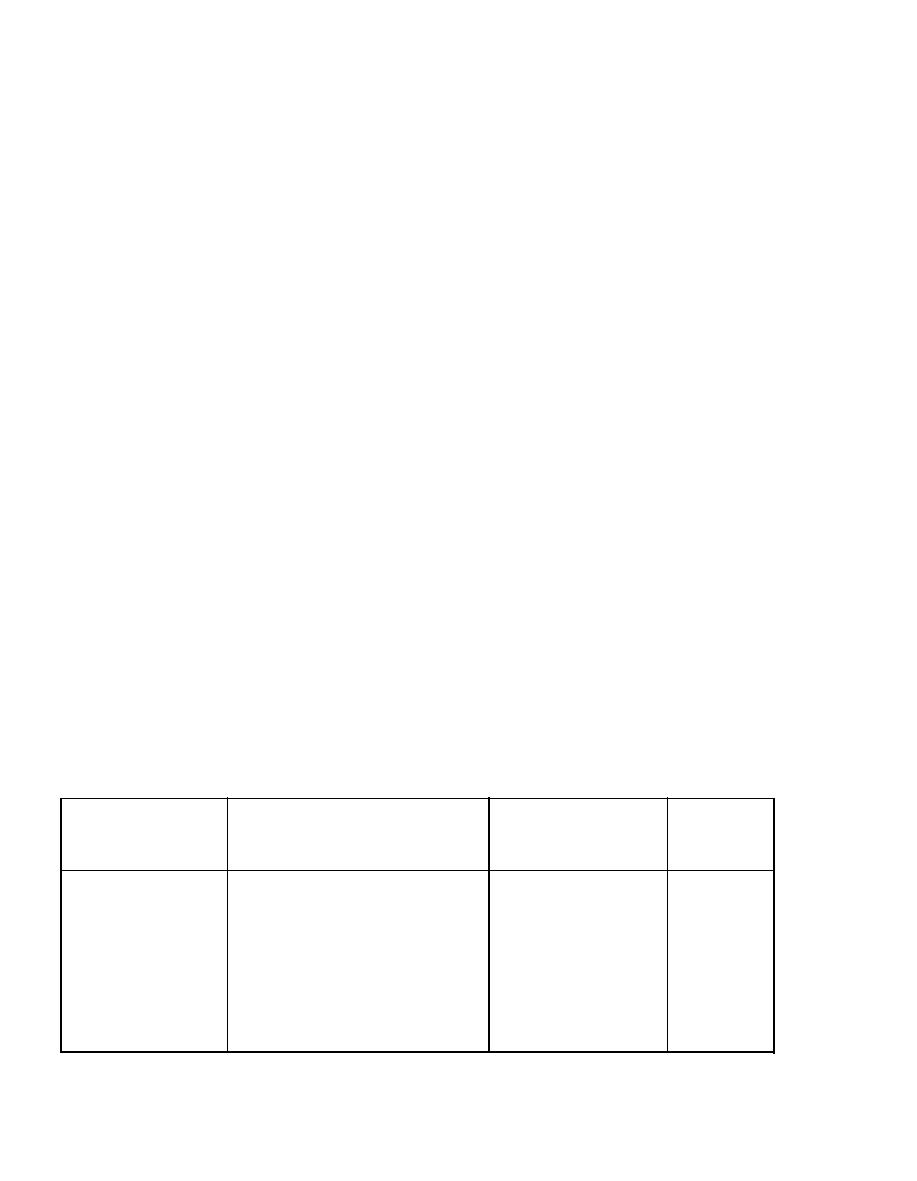

Custom Search
|
|

|
||
 mass meters. T a b l e 6-1 lists the meters associated with each of the general
c l a s s i f i c a t i o n s . The most common meters used in association with the subject
a r e a s of this manual are: o r i f i c e meters, turbine meters, and vortex shedding
meters.
2 . 4 . 1 O r i f i c e M e t e r s . O r i f i c e meters are the most widely used flowmeters. A
s p e c i f i e d size and shape of hole is made in a flat metal plate to create the
o r i f i c e . M o s t orifices are a concentric shape, but eccentric, conical, and
segmental shapes are used. T h e constriction of the orifice creates a pressure
d i f f e r e n t i a l on across the plate, which is sensed by pressure taps on each
s i d e . Orifices are popular because they have no moving parts and an increase
i n pipe size does not cause a significant increase in cost of the orifice
meter.
2 . 4 . 2 Turbine Meters. A turbine meter is positioned within the pipe and
c o n s i s t s of a multibladed rotor mounted perpendicular to the fluid flow.
E l e c t r i c impulses are sensed by a magnetic pickup, photoelectric cell, or
g e a r s in direct relation to the rotational speed. The sum of electrical
i m p u l s e s over a given period of time is in direct proportion to flow volume.
T h e addition of a tachometer to measure the rotational speed of the rotor will
d e t e r m i n e the flow rate. T u r b i n e meters can be of the insertion type which
a l l o w tapping of the distribution pipe and insertion of the meter without
i n t e r f e r e n c e to the fluid flow or system shutdown.
2 . 4 . 3 Vortex Meters. V o r t e x meters take advantage of the fact that eddies or
v o r t i c e s are formed downstream of a bluff object placed in a fluid flow. The
f r e q u e n c y of the vortex shedding is in direct proportion to the flow velocity
o f the fluid through the meter. The major components of the meter are: a
b l u f f body mounted across the column of flow, a sensor to generate electrical
i m p u l s e s as vortices are detected, and a signal amplification transmitter
w h i c h functions in proportion to the flowrate. V o r t e x meters are easily
i n s t a l l e d into the pipeline without special tools or complicated procedures.
3 RECORDING INSTRUMENTS. Where a continuous record of the changing
c o n d i t i o n s of a fluid is required (such as pressure, temperature, and flow),
r e c o r d i n g instruments are usually employed. T h e y provide information that can
be analyzed to determine current operating performance of the system, to
TABLE 6-1.
C l a s s i f i c a t i o n s and Types of Flowmeters
Differential
Positive
Pressure
Displacement
Mass
Velocity
Orifice
Piston
Turbine
Coriolis
V e n t u r i tube
Oval gear
V o r t e x shedding Thermal
Flow tube
N u t a t i n g disk
Electromagnetic
Rotary vane
Flow nozzle
Son i c
P i t o t tube
Elbow-tap
Target
Variable area
6-6
|
 
|
|
 |
||